MỐI LIÊN QUAN GIỮA KHOẢNG TPEAK-TEND VÀ TỈ LỆ TPEAK TEND/QT VÀ MỘT SỐ CÁC RỐI LOẠN NHỊP THẤT Ở BỆNH NHÂN NHỒI MÁU CƠ TIM CẤP CÓ ST CHÊNH LÊN ĐƯỢC CAN THIỆP ĐỘNG MẠCH VÀNH THÌ ĐẦU
Nội dung chính của bài viết
Tóm tắt
Mục tiêu: Đánh giá mối liên quan giữa khoảng Tpeak-Tend và tỉ lệ Tpeak-Tend/QT và một số các rối loạn nhịp thất ở bệnh nhân nhồi máu cơ tim cấp chênh lên trước và sau can thiệp động mạch vành thì đầu. Phương pháp nghiên cứu: Tiến cứu, mô tả cắt ngang có theo dõi dọc trên 94 bệnh nhân (BN) tại viện tim mạch – Bệnh viện Bạch Mai từ 8/2021 đến 9/2022. Kết quả: Tuổi trung bình của BN là 64,7 ± 11,9 tuổi, tỉ lệ nam giới là 73,4%. Có 56,4% BN là NMCT với động mạch thủ phạm là động mạch liên thất trước (LAD), 40,4% là NMCT với động mạch thủ phạm là động mạch vành phải (RCA). Có 29 BN xuất hiện rối loạn nhịp thất (ngoại tâm thu thất, nhanh thất, rung thất) chiếm 30,9%. Tần số tim lúc nhập viện của nhóm rối loạn nhịp thất 87,4 ± 18,1 ck/p cao hơn nhóm không có rối loạn nhịp thất 79,7 ± 15,1 ck/phút (p = 0,034). Phân suất tống máu thất trái EF của nhóm có rối loạn nhịp thất 42,4 ± 10,3% thấp hơn so với nhóm không có rối loạn nhịp thất 49,4 ± 8,6% (p = 0,001). Độ Killip của nhóm có rối loạn nhịp thất 2,1 ± 1,4 cao hơn nhóm không có rối loạn nhịp thất 1,2 ± 0,7 (p = 0,003). Điểm TIMI của nhóm có rối loạn nhịp thất 5,4 ± 2,5 cao hơn nhóm không có rối loạn nhịp thất 3,9 ± 1,8 (p = 0,002). Natri máu lúc nhập viện của nhóm có rối loạn nhịp thất 140,00 ± 2,22 mmol/l cao hơn nhóm không có rối loạn nhịp thất 138,32 ± 2,84 mmol/l (p = 0,006). Phân tích hồi quy logistic đa biến cho thấy khoảng Tp-e sau can thiệp liên quan đến biến cố rối loạn nhịp thất của nhóm nghiên cứu: Tp-e sau can thiệp (OR =0,129, p =0,007), cTp-e sau can thiệp (OR =5,784, p =0,007), Tp-e/QTc sau can thiệp (OR rất lớn, p =0,004), Tp-e/QT sau can thiệp (OR =0,000, p =0,007). Kết luận: Tỉ lệ Tp-e/QT sau can thiệp là chỉ số có giá trị cao nhất trong dự đoán rối loạn nhịp thất ở nhóm nghiên cứu, độc lập với các chỉ số khác. Tp-e/QT sau can thiệp >0,2236 dự đoán rối loạn nhịp thất với độ nhạy 69,0%, độ đặc hiệu 87,7%, giá trị dự báo dương tính 71,4%, giá trị dự báo âm tính 86,4% với độ chính xác chẩn đoán 84,2%, p <0,001.
Chi tiết bài viết
Từ khóa
Tpeak - Tend, khoảng QT, nhồi máu cơ tim có ST chênh, can thiệp động mạch vành thì đầu
Tài liệu tham khảo
2. Wang X, Zhang L, Gao C, Zhu J, Yang X. Tpeak-Tend/QT interval predicts ST-segment resolution and major adverse cardiac events in acute ST-segment elevation myocardial infarction patients undergoing percutaneous coronary intervention. Medicine (Baltimore). 2018;97(43): e12943. doi:10.1097/MD.0000000000012943
3. Charbit B, Samain E, Merckx P, Funck-Brentano C. QT interval measurement: evaluation of automatic QTc measurement and new simple method to calculate and interpret corrected QT interval. Anesthesiology. 2006; 104(2):255-260. doi:10.1097/00000542-200602000-00009
4. Nguyễn Quang Tuấn. Chẩn Đoán và Điều Trị Nhồi Máu Cơ Tim Có ST Chênh Lên. Nhà xuất bản Y học; 2019.
5. H. C. Bazett HCB. An Analysis of the Time‐relations of Electrocardiograms. Vol 2. History of Electrocardiology. Oxford University Medical School; 1997.
6. Pg P, Aa W. The measurement of the QT interval. Curr Cardiol Rev. 2014;10(3). doi:10. 2174/1573403x10666140514103612
7. Özbek SC, Sökmen E. Usefulness of Tp-Te interval and Tp-Te/QT ratio in the prediction of ventricular arrhythmias and mortality in acute STEMI patients undergoing fibrinolytic therapy. J Electrocardiol. 2019;56: 100-105. doi:10.1016/ j.jelectrocard.2019.07.004
8. Podolecki T, Lenarczyk R, Kowalczyk J, et al. Prognostic Significance of Complex Ventricular Arrhythmias Complicating ST-Segment Elevation Myocardial Infarction. Am J Cardiol. 2018;121(7): 805-809. doi:10.1016/j.amjcard.2017.12.036
9. Kassem M, E Tammam AB, Attia WM, Sarhan M. T Peak-to-T End/QT is an Independent Predictor of Early Ventricular Arrhythmias and Arrhythmic Death in Patients with ST Segment Elevation Myocardial Infarction. J Clin Exp Cardiol. 2018;09(09). doi:10.4172/ 2155-9880.1000607


